On Fri, Jul 10, 2009 at 2:54 PM, Mark Radvan
Hi Liz,
I’m very interested to know how Kazenoko positions children as ‘readers’ of performance – what assumptions they make about how children understand and interpret what the performers are doing, and how as makers they verify that understanding of children’s reception.
Also keen to know what aesthetic paradigms they mainly operate in?
Cheers
Mark
On 14/07/09 9:55 PM, "Liz Skitch"
Hi Mark,
Thanks for taking the time to read my blog. The Kazenoko Philosophy is beautiful.
This is their mission statement:
Children have free, imaginative and creative spirits. We, members of Kazenoko Theatre Company, aspire to create and produce theatrical programs which give inspiration and encouragement to children so that they will find life interesting and exciting. We want our programs to make them happy and feel positive about dealing with life.
We do not intend to present children a simplified version of adult theatre. Our approach is not based on the theory and style of sophisticated adult theatre. We recognise that children think, feel and express in their own ways. They have their own unique minds and point of views. Therefore we adopt their ways into our works. We follow their growing steps and try to integrate them into our creative process, so that our works will reflect their energy and joy. We believe that creative ability of young people is rooted in their sense of play, so we try to create theatre in which their creative sense of play is nurtured and enhanced.
We want to think together with children how to live a good life. With children we want to find out how to live in harmony with others. We would like to think that wars and violence are not the ways to achieve happiness. It is not easy to find the best solution to achieve a good life and ideal society but children are in the best position to think about it because they have no past to be bound firmly.
The members of Kazenoko Theatre Company wish to devote their energy and creative resources continuously to offer theatrical programs of high artistic and educational qualities to children and young people of the world.
Based on their work for 3-6 year olds I have seen so far they take the children step by step into the story through a series of games and comic routines (no fourth wall). Some of these games are familiar to us, others are traditional Japanese and some are made up by the actors. They games melt into story telling and all is linked by song and music. Their designs (set, music and use of space) are very original and sophisticated. The stories are told through image drama, often making extraordinary things out of found objects.
Their pieces for primary schoolers dive into the story a lot earlier but still take the time to establish a sense of play, a strong relationship between performers and performers and audience and to unpack how the set and visual effects are created (often the set is put together/ pulled apart as part of the show). Not sure if my favorite so far is Kyushu Kazenoko's "Nan-de Man" (a very contemporary story with a comic book feel about a little boy who always asks "Nan-de"- Why?) or Tokyo Kazenoko's "Nanka Youkai" (about an old Japanese Grandma and a little ghost- this has a more traditional Japanese feel). Both are very different to each other and are by the same director Ken Nakajima, who created "Toppinshan" (which was programmed as part of the 2000 “Out of the Box Festival”). Once again the visual effects and sound designs are stunning. Their shows are packed with humor and are very original.
In terms of measuring how children receive their shows, they carry out test showings for children post creative developments and then head back into the rehearsal room to make changes based on the responses. But because their works exist in repertoire for years (some up to 20), they are constantly improving them based on audience response. Also, they are very connected with the schools and have a very unique organisation here "Kodomo Gekijou" (The Children's Theatre Company) which is mad up mostly of mothers who are passionate about children's well being and children's theatre. They organise lots of performance opportunities through gathering the wider community together and contacting the theatre companies (in effect, they have become producers). But they have also started to become an important sounding board for Kazenoko Kyushu in the development of new works and feel a sense of ownership.
Signing off,
Liz Skitch
On Wed, Jul 15, 2009 at 9:11 AM, Mark Radvan
Hi Liz
Love all that and relate to it very strongly. We (at Imaginary) have been working on the premise of beginning each Tashi story in the world of the familiar for exactly the same reasons – to build the relationship with the audience and to ‘train’ the audience into the performance conventions we are using. Then we take them through the ‘portal’ into the world of the imaginary, the story proper, where they will be taken into places that can be funny one moment and dark and threatening the next. But because we have built that sense of trust and because we have reassured them from the start that this is ‘pretending’ not ‘real’ they are ready for a journey that is full spectrum. And underlying everything is the sense that this is a celebration of storytelling and therefore of the transformative power of the imagination, which answers the question of ‘why’ we are doing it.
This season has been the first with two new cast members – Bernadette Pryde and Kevin Spink – and because they are both ‘actors’ as well as performers we have been able to start exploring character in much greater detail and the emotional integrity and insight that comes with that. But it is a long journey. We are such a slot machine culture that we have little patience with organic processes. This is Year 6 of the Tashi Project and each year we investigate another layer and found ourselves needing another level of training and preparation. But it is starting to pay off – we sold 95% this season in the Visy (over 3500 tickets) - and in October we will be in two festivals – Brisbane Festival and then Sydney Children’s Festival.
The Mothers thing – so interesting – that’s what happens in South Korea too – the Mothers Club is immensely powerful and no children’s theatre company can afford not to pay attention to them as a major buying force and influence.
Cheers
Mark
On 16/07/09 11:35 AM, "Liz Skitch"
Hi Mark,
Beautiful hearing about the philosophy of Imaginary. It is good for me to see it articulated so clearly:
First a relationship is built between audience and performers.
Then the audience is taken through a portal into the world of the imaginary.
Yes- and because the trust has been built, and it has been set up as a 'play' and the audience know that visual effects are created by the actors, it is okay to for things to get a bit scary.
And the reason for doing it: the transformative power of the imagination. And I think that the imaginations is ignited (for children) through games various forms of play.
Sayonara,
Liz Skitch
On Thu, Jul 16, 2009 at 9:11 AM, Mark Radvan
Hi Liz
Re scary – I think the point to make here is that theatre for children can be a full spectrum dramatic experience (including high tension bits) if the trust has been built and the audience understands the dramatic conventions. I read an evaluation by Patch Theatre (Adelaide) of one of their works and the comment was made of one scene that the children got scared/worried in the argument/fight scene because some of them thought it was the adults themselves fighting rather than the characters. So the children hadn’t fully understood the dramatic convention of ‘pretending’.
I can identify with that – the very first time I saw television (I had never even seen a film – we were living in South America at the time) I was already 5 years old – it was The Lone Ranger (cowboy drama series) and I had no idea it was ‘acting’ - I fully assumed it was real and reacted as if people really were fighting and really being shot. It was quite traumatic. An adult tried to explain to me that it was acting, but I still didn’t understand that the violence was fictional. I though they must use criminals for the people who got hit or shot and that was part of their punishment! (I also couldn’t understand where people went to when they walked out of screen, or how you could be indoors one moment and riding on a horse the next. Of course these days by the time a child comes to the theatre they are very used to this jumpcut way of telling a story.)
I am working at the moment on a theory that children come to the theatre with certain dramaturgical conventions already in their heads. If for example they have had a lot of picture books and stories read to them they understand how words can then be expanded on in a picture. We can use this convention. Similarly they hear the dramaturgical ‘turning points’ of literary narrative – eg Just then..., or, and that’s the end of the story. So we can incorporate those. And so on. The exciting thing is that these often turn out to be the hidden rules of adult theatre, so the research we do leads us to findings that apply to all theatre.
Keep well and keep writing!
Mark





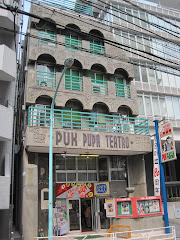
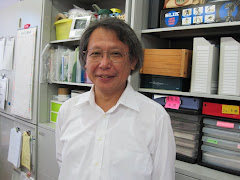
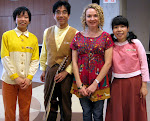
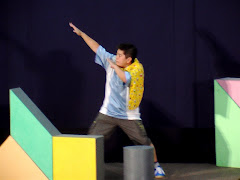



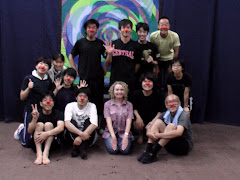


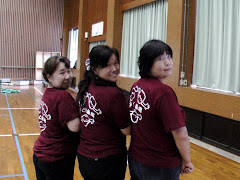

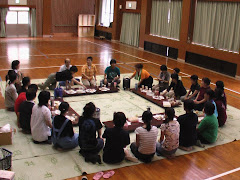
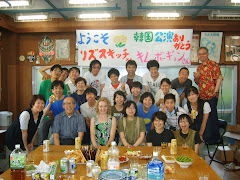

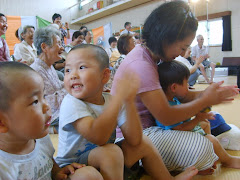

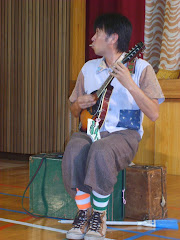


No comments:
Post a Comment